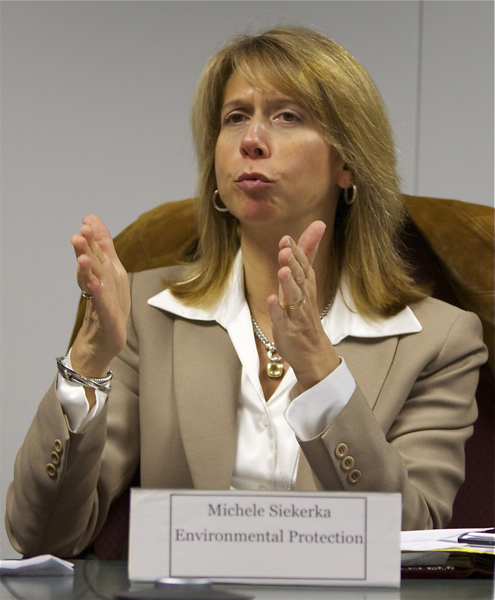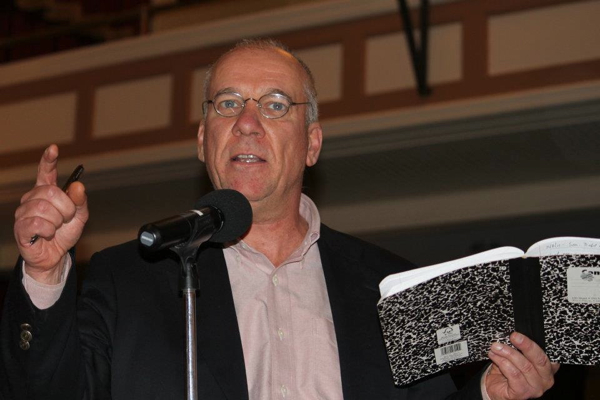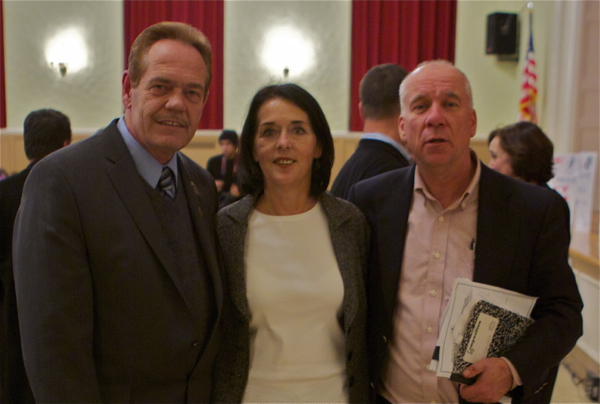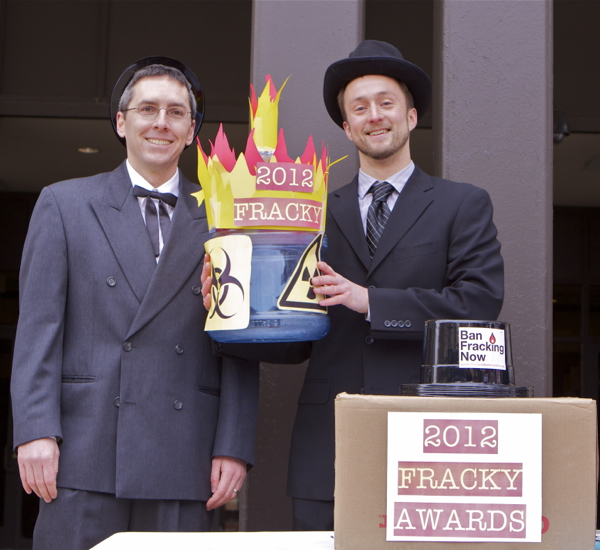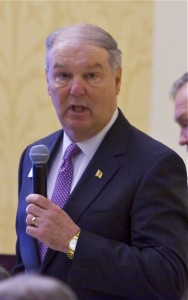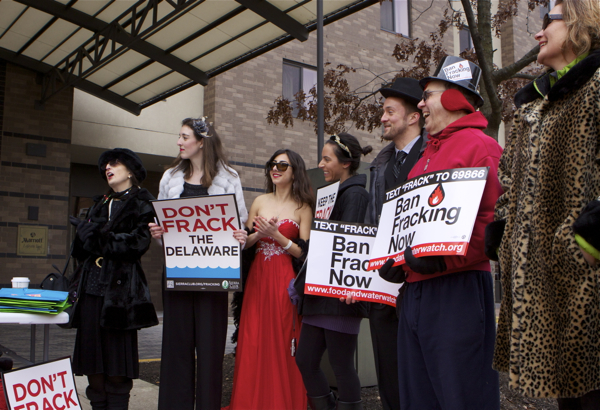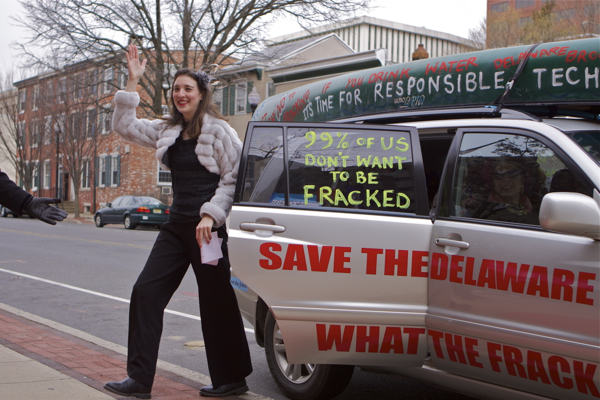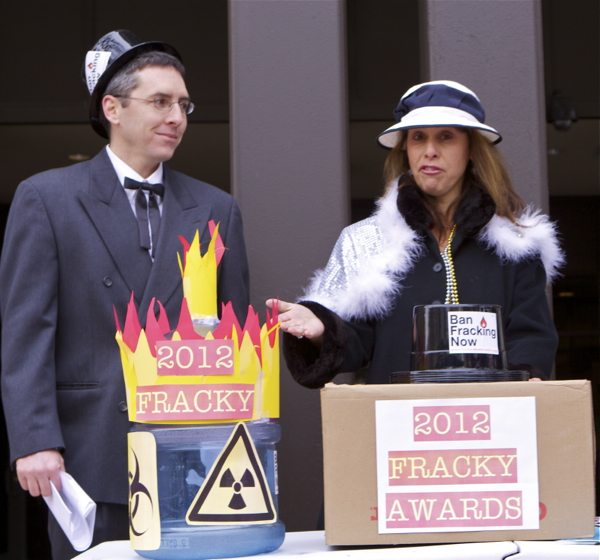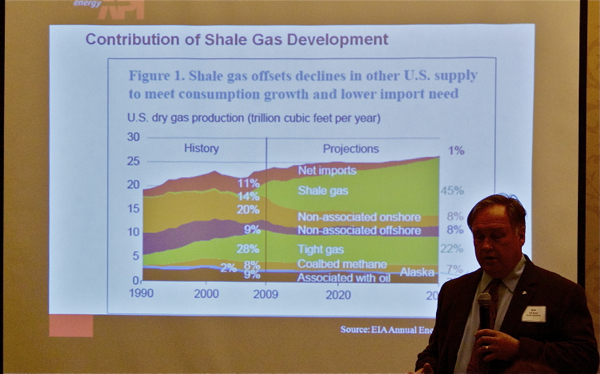Oil Industry Uses Obama’s Energy Policy To Oppose Fracking Ban
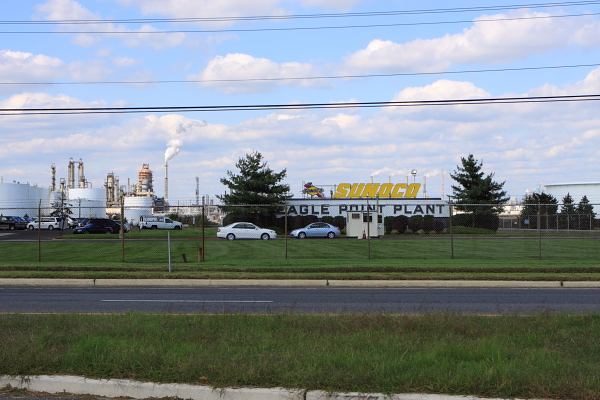
Sunoco Coastal Eagle refinery – West Deptford, NJ
In the last week, I testified on 3 important bills.
Each time, I have been closer to (or in agreement with) Governor Christie (on RGGI), and oil, gas, and chemical industry lobbyists (fracking ban – Sunoco Sweeney Shakedown) than with my environmental colleagues.
Today, I took the same position in opposition to a bill as Hal Bozarth, a man I’ve described as “The Godfather of NJ Toxics”.
That sickens me. (and I’ve severely criticized Dave Pringle of NJEF for that!)
But I can assure you that I have not changed my views and remain on the side of the green angels. So, here’s the quick, dirty, and sad story:
I) Symbolic Fracking Ban ignores real threats to NJ waters
In a January 27 post, I asked where was the outrage in the environmental community about President Obama’s pro-fossil energy policy statement in the SOTU Address:
Obama’s State of the Union address BRAGGED about expanding oil and gas production and yesterday Obama announced 21 million acres of Gulf of Mexico oil and gas leases. From the SOTU:
“Nowhere is the promise of innovation greater than in American-made energy. Over the last three years, we’ve opened millions of new acres for oil and gas exploration, and tonight, I’m directing my Administration to open more than 75 percent of our potential offshore oil and gas resources. Right now, American oil production is the highest that it’s been in eight years. That’s right – eight years. Not only that last year, we relied less on foreign oil than in any of the past sixteen years.
Where is the ENGO outrage over that?
Could you imagine the condemnations if a Republican President had made that same statement?
[Update: You don’t have to use your imagination – here is a typical example on Bush/Cheney energy policy:
Natural Gas
Natural gas was connected in high places too.
When the Energy Department drafted a chapter for the report about how to increase domestic energy production, the text mentioned the importance of hydraulic fracturing, a method of accelerating production of natural gas wells. It so happens that Halliburton is a major provider of the service.[…]
EPA officials balked at suggesting any actions for the task force before the study was completed. The subject disappeared from the agenda by the day of the meeting.
But it didn’t disappear from the final report. The document emphasized the technique’s importance as “one of the fastest-growing sources of gas production” and noted that “each year nearly 25,000 oil and gas wells are hydraulically fractured.” The information about potential water well contamination, the appeals court decision and the possibility of EPA controls had all been dropped.
A few paragraphs after the hydraulic fracturing discussion comes the task force recommendation that the nation “promote enhanced oil and gas recovery from existing wells through new technology.”
Yet the silence in criticizing Obama is deafening.
But today in Trenton, that Obama policy came home to roost.
Jim Benton, head of the NJ Petroleum Council, didn’t miss the Obama SOTU.
Benton began his testimony opposing a fracking ban bill by strongly supporting President Obama’s energy policy – particularly Obama’ support of expansion in domestic natural gas production – to attack proposed legislation to ban fracking in NJ.
Benton called NJ’s response to fracking “isolationist” and out of step with national policy.
Benton correctly noted that any NJ gas in the Utica shale is very unlikely to be economically recoverable, especially when there are huge cheap deposits right next door in the Marcellus deposit. Any NJ fracking would be decades away.
But enviro’s (and the bill sponsor, Senator Gordon) hyped these Utica shale drilling risk.
Meanwhile, a parade of environmentalists testified about every fracking related issue under the sun, with the exception of the Obama SOTU pro-gas policy and the immediate threats to NJ from fracking.
Enviro’s simply ignored the real, immediate risks of fracking – which come from importation of fracking wastewater and the upcoming DRBC regulations – in order to declare victory on a meaningless fracking ban bill.
Of course, Democrats love this political cover, which provides praise for appearing to be protecting NJ’s water resources from fracking.
Meanwhile, far more important legislation to ban treatment and disposal of fracking wastewater (A575 and S253) is ignored and efforts to block Governor Christie’s support of DRBC fracking regulations has been abandoned (bills were introduced in each House last session to set NJ’s DRBC policy, but have not been reintroduced this session).
How is it possible to support a Legislative BAN on fracking but not restrictions on wastewater [treatment and disposal] imports and [continuation of DRBC moratorium] stronger DRBC restrictions?
Why not link these bills?
I call bullshit on that.
II) Sweeney Sunoco Shakedown
Sunoco has shut down their heavily polluted refinery on the Delaware River in West Deptford, laid off hundreds of workers, failed to cleanup the toxic site, and sued the town successfully for some $20 million in property tax appeal rebates.
I can hardly imagine a greater corporate outrage.
But as bad as that is, it doesn’t justify using environmental laws to shake down Sunoco in tax appeal negotiations, under the guise of cleaning up the site.
Do any other environmentalist groups resent using environmental laws as political pawns and shakedowns? [And using DEP as a legislator’s personal attack dog.
Sweeney’s bill is about as legitimate as the mobster who stops by a store owner to advise that it would be a shame if the place burned down, while sticking his hand out for a monthly “fire insurance” payment].
This is the kind of crap that discredits us all.
But again, the silence was deafening.
Senate President Sweeney has gotten a lot of favorable local press coverage for his bill, which would direct any tax appeal rebate money to a special DEP account to assure prompt cleanup of the site. (see: Sweeney: Sunoco’s Eagle Point must clean up before tax rebates are paid up
Sunoco site cleanup will cost more than 10 times that $20 million tax rebate.
[And Sweeney has long ignored Sunoco pollution and DEP’s failure to enforce cleanup laws, wile providing subsidies to Sunoco, which a Star Ledger editorial slammed on 12/30/07:
“The proposed RGGI law being rushed through Trenton’s lame-duck legislative session reflects a miserable New Jersey political tradition. Every special interest imaginable has reached in to grab a share of the money or other benefits.”]
And there are hundreds of similar sites in NJ where corporate polluters are not in compliance with federal and state financial assurance and cleanup requirements designed to prevent exactly the abuse that Sunoco is engaged in – i.e. close the facility, but avoid cleanup, block any redevelopment opportunity, and shift pollution risks and cleanup burdens to taxpayers.
So, I urged the Senate Environment Committee to conduct legislative oversight of the DEP RCRA Corrective Action and Financial Assurance programs, which impacts hundreds of sites across the state – instead of using environmental laws in a political tax appeal negotiation. Per EPA rules:
All owners and operators of facilities that treat, store, or dispose of hazardous waste are required to provide proof that they will have sufficient funds to pay for the clean up, closure, and post-closure care of their facilities. They also must demonstrate that they have sufficient funds to pay for the clean up of any accidental releases of hazardous constituents during the active life of their facilities, and compensate any third parties for any resulting bodily injury or property damage.
Plus, if DEP has been unwilling – for political reasons – to force corporate polluters to pony up millions of dollars in financial assurance for cleanup costs and to actually cleanup sites, what on earth makes you think they would enforce similar requirements on the public sector, e.g. West Deptford and Gloucester County, as required under the Sweeney bill?
Do you think DEP would ever go after West Deptford and Gloucester County for failure to pay? Of course not – that payment will never be made and the site will never be cleaned up.
The bill is nothing more than a shield in a tax appeal case – it has nothing to do with protecting the environment and cleaning up a toxic site.
Meanwhile, actual current laws to require that Suncoco -nand hundreds of other corporate polluters – demonstrate financial aasurace for 100% of cleanup costs are ignored and go unenforced.
So, I had to agree with Hal Bozarth and oppose the bill as a cynical political ploy.
[Update: here is Senate Dems spin – as suspected, note how it leads with a big lie. The bill would do NOTHING to “ensure the cleanup of environmentally contaminated sites”. If they wanted to do that, the bill would mandate cleanup – it does not:
TRENTON – Legislation sponsored by Senate President Steve Sweeney that would ensure the clean up of environmentally contaminated sites in New Jersey cleared the Senate Environment and Energy Committee today. The Senate President announced his intention to sponsor the legislation last month in front of the shuttered Sunoco Coastal Eagle Point Refinery in West Deptford.]
III) Pulling punches on RGGI
I’ve already written about why I agree with some of Governor Christie’s criticisms that RGGI does not reduce greenhouse gas emissions.
But again, environmentalists ignore all that and support a totally ineffective RGGI bill.
Why not demand that Democrats pass a real greenhouse gas reduction bill or reform RGGI so that at least the cap is reduced?
Why set the bar so low?
Members and funders of environmental groups really need to start asking for more.
